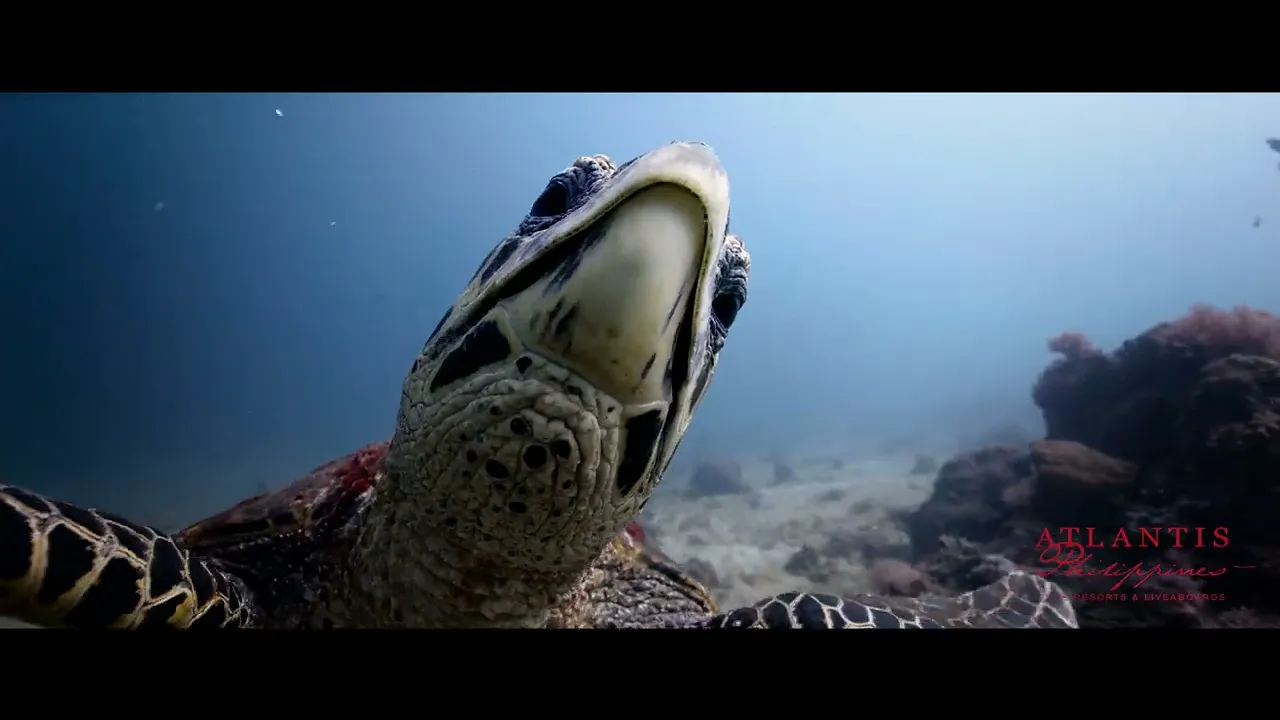"The Center of the Center of Marine Biodiversity"
When you get off the boat on Sabang Beach, near Puerto Galera on Mindoro Island in the Philippines, a sign that reads “Welcome to Sabang, Your Gateway to the Center of the Center of Marine Biodiversity” greets you. That phrase defines the diving in the region, as you will not find more fish species anywhere else on Earth.
There are several different ways of counting species, but most estimates indicate that there are well over 2,000 species of coral reef fish in the Coral Triangle — the high-diversity area between Indonesia, the Philippines, and Papua New Guinea. Getting an exact number for any given location is more difficult, but recent estimates suggest the number for Puerto Galera is at least 1,000. For comparison, the number of coral reef fishes in the entire Greater Caribbean region is a little more than 700, and Hawaiʻi has about 600.
Scientists have tried to explain why the Coral Triangle region is diverse. The three competing hypotheses are center of origin, center of accumulation, and center of overlap. Each theory explains high diversity slightly differently, but they are all straightforward.
The first hypothesis suggests that the Coral Triangle is an area where a lot of species are formed, and the second assumes that species form in the periphery in places such as Hawaiʻi and eventually migrate and accumulate in the center, which is the Coral Triangle. The third theory accounts for the location of the Coral Triangle between the Indian and Pacific oceans, so it’s a place where there’s overlap among species that evolved separately. The most likely explanation is that all these processes contribute to the region’s high diversity.
You will see a lot of different species on a single dive, but there’s stunning diversity in the habitats as well. Every dive can be wildly different as you move from classic muck dives to white-sand reef dives, wall dives, drift dives, macro dives, and wreck dives, all within an hour’s boat ride from Puerto Galera.
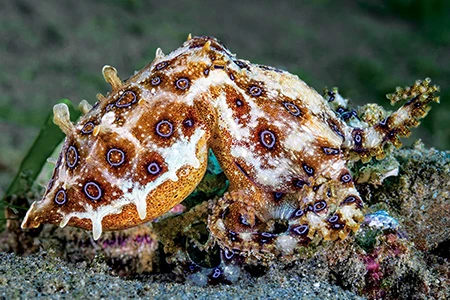
Puerto Galera
Regardless of how the area became so diverse, diving is spectacular in the Coral Triangle, especially in the Philippines. You are practically guaranteed to see something new on every dive, even when you spend hours underwater, which is what I do. Most of my dives these days are deep, scientific, technical dives, one of which I did at Blackfish Corner.
This site is on the west point of Verde Island, about a 45-minute boat ride from Puerto Galera, and is known for an abundance of red-toothed and black triggerfish. Because of the site’s location, currents there are strong and unpredictable. The bottom configuration and colors are amazing, with a lot of live corals as well as many current-loving gorgonians and sponges. The visibility isn’t always great because of the currents, but the nutrients in the water are what attract all the fish. Washing Machine is another popular nearby site, and that’s a good description of what some dives there feel like.
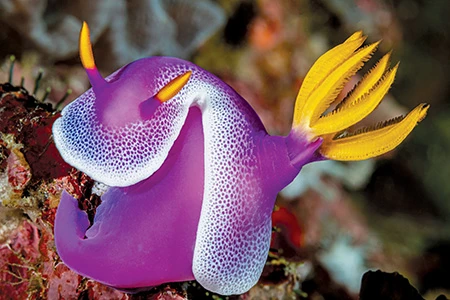
I almost always dive with a camera, but strong currents forced me to leave it behind this day to concentrate on my science: laying transects and counting fish along them to understand the mechanisms that allow them to coexist. My team and I went to about 400 feet (122 meters) for 10 minutes, which translated to about four hours of decompression.
We started our ascent after completing our brief work, and when we reached about 300 feet (91 m), I looked up and saw three large shark silhouettes right above us. When we got closer, I noticed that the sharks’ caudal fins were very long, which is an unmistakable characteristic of thresher sharks. The three sharks swimming just above our heads are one of the most spectacular underwater sights I’ve ever witnessed. We were on rebreathers and got very close. It was the kind of unique encounter you can expect when diving in the Coral Triangle, even though this one will remain just a story since none of us had a camera.
Verde Island’s opposite point is also worth a visit. The most spectacular dive site there has many names: Some call it Pinnacles, while others call it The Drop Off. Regardless of the name, it’s where I saw some of the best and most diverse coral cover. When going to the Philippines, some people immediately think of macro photography, but photographers should bring their wide-angle lenses for the spectacular scenery at Pinnacles.
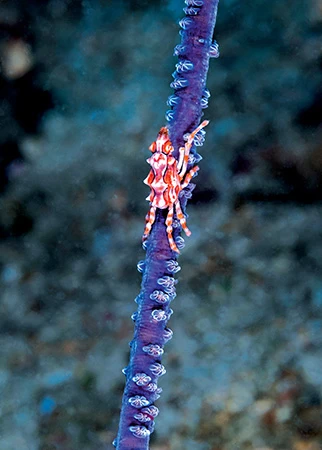
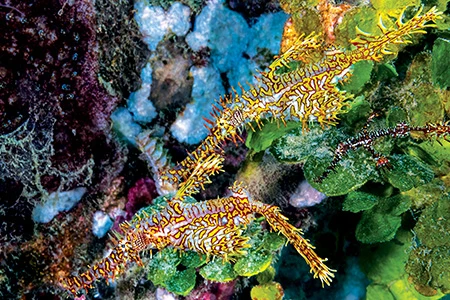
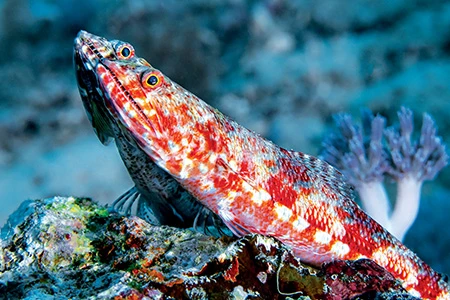
Coral Conservation
When talking about coral reefs, we must also discuss their conservation status. Corals live in symbiosis with algae called zooxanthellae. Symbiosis is a close relationship between two different species from which both species usually benefit. In this case, algae and corals feed on each other’s waste in one of nature’s most efficient recycling systems. Neither corals nor algae can get enough nutrients from the water alone, so their mutualistic relationship allows both to survive and thrive in nutrient-poor waters.
Corals are very sensitive to temperature changes, and our planet is warming. When the water temperature goes above what the corals can tolerate, they get stressed and expel the zooxanthellae that give them food and provide their color. That’s when they turn white in a phenomenon called coral bleaching.
The bad news is that bleaching is becoming more frequent and affecting more corals every year. It is a global problem with no easy and quick solution. The Earth is warming quicker than corals can adapt to the warmer temperatures, and the entire coral reef ecosystem is suffering the consequences.
The good news is that reefs in the Coral Triangle region, particularly in the Verde Island Passage, are somewhat sheltered from warming and bleaching. Two characteristics of the region make it special. First, the strong currents make the area very dynamic in terms of temperature. There are many areas where turbulence caused by currents brings cold water from the bottom to the surface, so the corals in this region are much better adapted to fluctuating temperatures than elsewhere.
Second, cold water also brings nutrients from the bottom, and those nutrients make corals resist bleaching more than in other places such as the Central Pacific. Puerto Galera is not unique in being a refuge for corals; there are many similar places in the Coral Triangle.
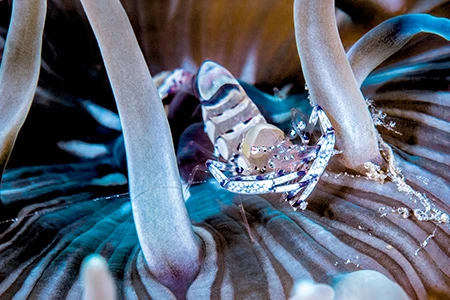
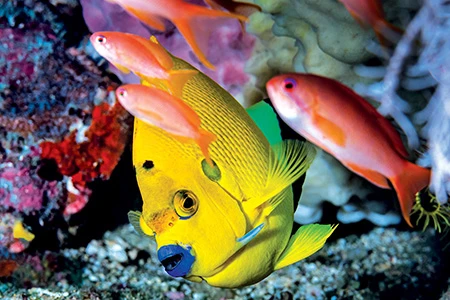
The Bottom Line
Diving in the Philippines is an experience like no other. With more than 7,600 islands and a rich marine biodiversity, the Philippines boasts some of the most stunning dive sites on the planet. The following are several reasons why I love it there.
The Philippines’ position at the head of the Coral Triangle makes it one of the global centers of marine biodiversity. Its waters are home to an astonishing array of marine life, and Puerto Galera provides unparalleled access to this diversity.
The area offers a wide range of sites catering to divers of all levels, from beginners to advanced. Whether you’re into wall diving, drift diving, wreck diving, or macro photography, there’s something for everyone, and every dive has something unique to offer.
Even though Puerto Galera and Verde Island can have large temperature fluctuations, you’ll never need more than a 5 mm wetsuit. The visibility on some sites might not be crystal clear due to the currents, but the diversity of life more than makes up for it.
Puerto Galera has one of the best dive tourism infrastructures in the Philippines, with dive resorts, liveaboards, and dive centers scattered across Sabang. Whether you prefer luxurious accommodations or budget-friendly options, there are choices to suit everyone, and it’s not hard to find someone to fix your camera equipment in case a problem arises.
The Philippines is also known for its rich cultural heritage and natural topside attractions. Divers can combine their underwater adventures with visits to stunning beaches, lush rainforests, and the vibrant city of Manila. From exploring historic Spanish colonial sites and Japanese World War II bunkers to encountering unique wildlife, the Philippines offers many enjoyable experiences out of the water.
The Philippines has been actively working to protect its marine ecosystems. Sylvia Earle’s Mission Blue recently designated Verde Island as a Hope Spot — a location that is “critical to the health of the ocean.” This recognition was made not only because the area is of exceptional biological importance but also because local communities are heavily involved in protecting it. Many areas around Puerto Galera are also protected, enjoyed only by divers and managed by local communities.
Puerto Galera should be on top of everyone’s dive destination list because of the unparalleled underwater experience it offers combined with its breathtaking marine biodiversity, great diving conditions year-round, and plenty of topside activities. Whether you’re an advanced underwater photographer or a novice diver, the Philippines always has something extraordinary to offer.
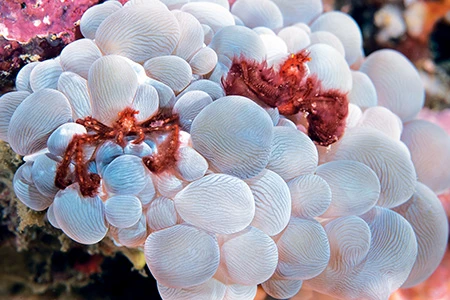
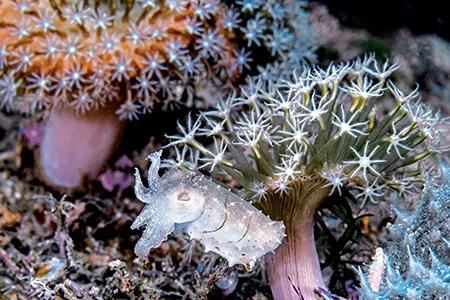
How To Dive It
Getting there: Your port of entry in the Philippines will be Manila. Philippine Airlines flies nonstop from New York (JFK), Seattle (SEA), Los Angeles (LAX), and San Francisco (SFO) to Ninoy Aquino International Airport (MNL). United Airlines also flies directly from SFO to MNL. Other airlines can take you there if you don’t mind a layover somewhere in Southeast Asia. After landing in Manila, take land transportation for the two- to three-hour ride to Batangas and then get on a ferry that can take anywhere from 20 minutes to an hour, depending on the boat. This last bit of in-country transportation might seem complicated, but your dive operator can organize it.
Conditions: Puerto Galera has a dry season from October to May, when dive conditions are usually better. The rainy season is from June to October, when runoff affects the visibility, and there is a low chance that a typhoon will hit. The hottest months are April and May, when temperatures average 78°F to 93°F (26°C to 34°C), and the coolest are December and January, when temperatures range from 71°F to 86°F (22°C to 30°C). Water temperatures hover around 81°F (27°C) year-round, getting warmer or cooler by no more than a couple of degrees depending on the season.
Currents are unpredictable due to the region’s geological complexity. Puerto Galera sits on a small peninsula sticking out from the southern edge of the Verde Island Passage, the strait that separates southern Luzon Island from northern Mindoro Island. Water coming from the Pacific flows through this channel toward the South China Sea, and as it passes through, it forms eddies and sometimes causes coldwater upwellings. These upwellings bring nutrients from the deep, creating the high biodiversity in the region.
Explore More
Discover some of Puerto Galera’s marine diversity of in this video.
© Alert Diver – Q3 2024
